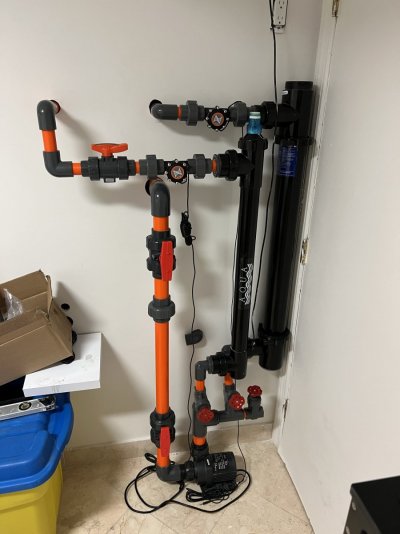- Joined
- Nov 26, 2019
- Messages
- 223
- Reaction score
- 77
I'm currently plumbing a 150 gallon tank with a bean animal overflow. On the main drain I'll be using a Clarisea SK5000 which has a maximum flow rate of 1320 gph. I purchased an apex 1 inch flow sensor to put on the Clarisea drain line. Is it a bad idea to put a flow sensor on the drain line? Will it get clogged easily? Has anyone ever used a flow sensor on a drain line before?
On a similar note, taking into account some laws of fluidynamics ( Bernoulli's Equation and the equation of continuity), R, the flow throughout the pipe, should be equal at any point in the pipe. Therefor, wouldn't it make no difference where a flow sensor is placed in the loop. I ask because, while tuning my UV sterilizers, should I crank the pump up until my flow sensor reads my desired flow rate or should I be taking into account that there is an elbow right after the flow sensor. Attached below is a picture of the uv setup I'm referring to.

On a similar note, taking into account some laws of fluidynamics ( Bernoulli's Equation and the equation of continuity), R, the flow throughout the pipe, should be equal at any point in the pipe. Therefor, wouldn't it make no difference where a flow sensor is placed in the loop. I ask because, while tuning my UV sterilizers, should I crank the pump up until my flow sensor reads my desired flow rate or should I be taking into account that there is an elbow right after the flow sensor. Attached below is a picture of the uv setup I'm referring to.















